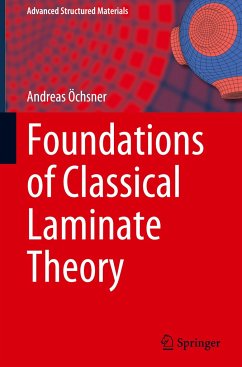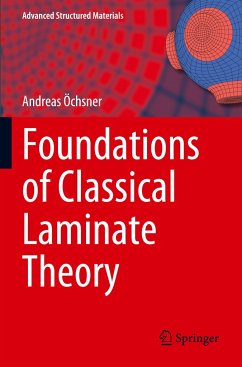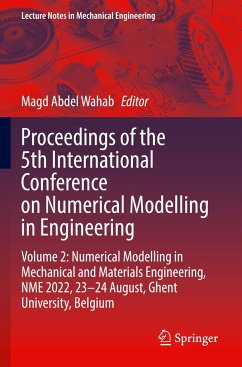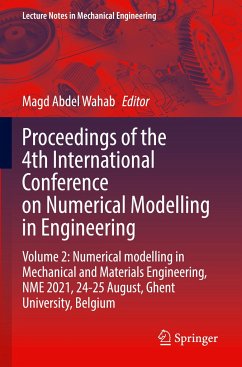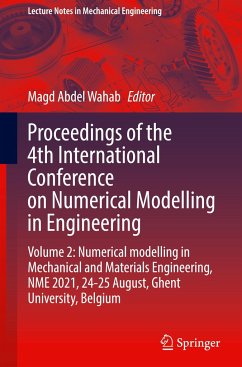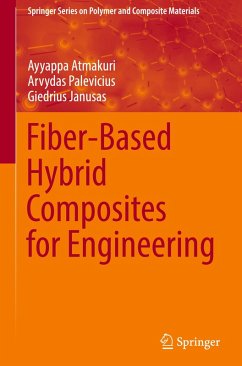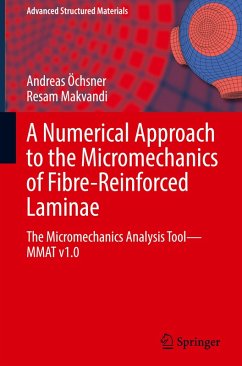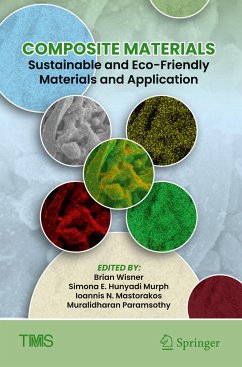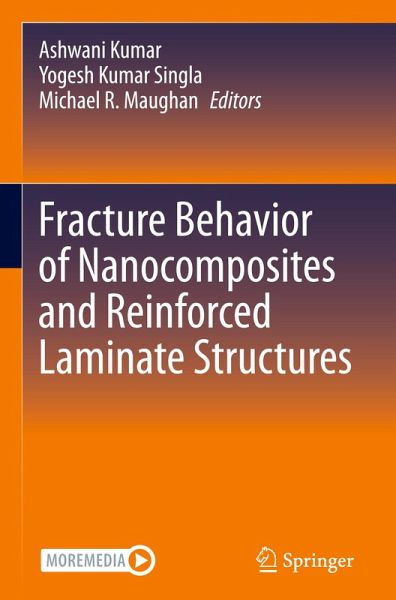
Gebundenes Buch
Fracture Behavior of Nanocomposites and Reinforced Laminate Structures
Versandkostenfrei!
Versandfertig in 6-10 Tagen
Weitere Ausgaben:

PAYBACK Punkte
88 °P sammeln!




This contributed volume is designed for fundamental understanding of fracture behavior of composites applied in core industrial sectors such as mechanical, electronics, Automotive, civil structures, and aerospace research and fills the gap of knowledge on fracture analysis. The book is primarily written for senior undergraduates, graduate students, and academic researchers in above mentioned fields.
Dr. Ashwani Kumar holds a Ph.D. in Mechanical Engineering, and currently serving as a Senior Lecturer in Mechanical Engineering (Gazetted Officer Group B) at the Technical Education Department Uttar Pradesh, Kanpur India. With over 14 years of combined experience in research, academia, and administration. As an academician and researcher, Dr. Kumar serves as the Series Editor for six book series published by CRC Press (Taylor & Francis USA) and Wiley Scrivener Publishing, USA. He acts as a Guest Editor and Editorial Board Member for eight international journals and is a Review Board Member for 20 prestigious international journals indexed in SCI/SCIE/Scopus, including Applied Acoustics, Measurement, JESTEC, AJSE, SV-JME, and LAJSS. Dr. Kumar has a prolific publication record, with more than 100 articles in journals, book chapters, and conferences. He has authored, co-authored, and edited more than 40 books in Mechanical, Materials, and Renewable Energy Engineering. Holding four patents, he is recognized for his contributions to academia and research, earning the title of Best Teacher for excellence in both fields. He is associated with International Conferences as Invited Speaker/Session Chair/ Advisory Board/Review Board member/Program Committee Member. He has delivered many invited talks in webinar, FDP and Workshops. His current research interests encompass AI & ML in Mechanical Engineering, Smart Materials & Manufacturing Techniques, Thermal Energy Storage, Building Efficiency, Renewable Energy Harvesting, and Sustainable Mobility. Dr. Yogesh Kumar Singla is currently an Assistant Professor in the School of Engineering, Math, and Technology at Navajo Technical University, USA. Prior to this, he was a dynamic researcher at the University of Idaho, USA. With a rich academic background, he previously served as a Research Associate at Case Western Reserve University, USA. Dr. Singla holds a Ph.D. from IIT Roorkee. With over 9.5 years of comprehensive experience in both research and teaching, Dr. Singla specializes in Manufacturing, Welding, Surface Engineering, Tribology, Materials Characterization, Welding Metallurgy, and Mechanical Behavior of Metals. His academic contributions include boasts 16 SCI publications, 9 book chapters, and 7 international conference presentations . He has also successfully supervised 1 Ph.D. and 4 M.E. theses, showcasing his mentorship skills. An avid researcher, Dr. Singla is a sought-after reviewer for several SCI journals published by Elsevier and Springer, known for their impact factors ranging from 0.743 to 7.72. He has also filed a utility patent on the utilization of nano fly ash, highlighting his innovative approach to research. He has edited three books published by CRC Press (Taylor & Francis Group) and has three more book proposals accepted for publication by Springer Nature and Wiley Scrivener. Dr. Michael R. Maughan is an Associate Professor of Mechanical Engineering at the University of Idaho. He holds B.S. and M.S. degrees in Mechanical Engineering. He earned his Ph.D. in Materials Engineering from Purdue University 2015. Prior to joining the academic ranks, he worked in industry at both Fortune-50 and startup companies as a mechanical designer and engineering manager. He holds five utility patents. His research expertise is in material behavior and properties, particularly microstructure-properties relationships for advanced manufacturing processes. In 2015 he received the Estus H. and Vashti L. Magoon Award for excellence in graduate teaching at Purdue University and has taught over 50 courses at the University of Idaho. He was named Outstanding Early Career Faculty by the University of Idaho College of Engineering in 2022.
Produktdetails
- Verlag: Springer / Springer Nature Switzerland / Springer, Berlin
- Artikelnr. des Verlages: 978-3-031-68693-1
- Seitenzahl: 552
- Erscheinungstermin: 15. Oktober 2024
- Englisch
- Abmessung: 241mm x 160mm x 34mm
- Gewicht: 1030g
- ISBN-13: 9783031686931
- ISBN-10: 3031686934
- Artikelnr.: 71217049
Herstellerkennzeichnung
Springer-Verlag GmbH
Tiergartenstr. 17
69121 Heidelberg
ProductSafety@springernature.com
Für dieses Produkt wurde noch keine Bewertung abgegeben. Wir würden uns sehr freuen, wenn du die erste Bewertung schreibst!
Eine Bewertung schreiben
Eine Bewertung schreiben
Andere Kunden interessierten sich für


